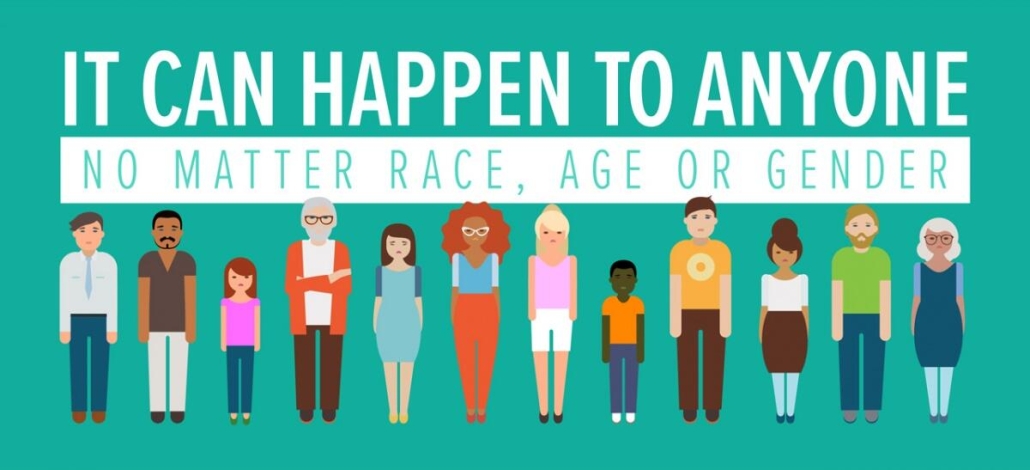Is this Trafficking?
What To Look For
What is Human Trafficking?
Human trafficking is a form of modern-day slavery and a serious crime. Traffickers use force, fraud, or coercion to make victims engage in labor or commercial sexual exploitation.
Every year, millions of people are trafficked around the world, including our own neighborhoods in the District of Columbia. Human trafficking is the second largest and fastest-growing criminal industry in the world, second only to drug trafficking. Here are some important facts:
- Children account for half of the victims of human trafficking. In fact, the average age that a young person becomes involved in sex trafficking is 12 years old. If the victim is a minor, no force, fraud, or coercion is necessary to prove trafficking. Any youth under the age of 18 who is involved in a commercial sex act is considered to be a victim of trafficking.
- Sex traffickers prey on vulnerable people, especially young people, and often lure them with promises of protection, love, or adventure. They may contact potential victims through social media or approach them at clubs and bars, at school, in malls, or in metro stations.
- Labor trafficking includes situations of debt bondage, forced labor, and involuntary child labor. Common types of labor trafficking include people forced to work in homes as domestic servants and factory workers held in inhumane conditions with little to no pay.
- Victims of human trafficking are often afraid to come forward and unable to leave traffickers because of trauma, physical violence, fear of harm to their families, having nowhere else to go, or a distrust of authority figures.
If you learn to recognize the warning signs of human trafficking, you could help save a life.
Sex trafficking is a form of modern-day slavery in which individuals perform commercial sex through the use of force, fraud, or coercion. Minors under the age of 18 engaging in commercial sex are considered to be victims of human trafficking, regardless of the use of force, fraud, or coercion.
Sex traffickers frequently target victims and then use violence, threats, lies, false promises, debt bondage, or other forms of control and manipulation to keep victims involved in the sex industry for their own profit.

U.S. law defines human trafficking as the use of force, fraud, or coercion to compel a person into commercial sex acts or labor or services against his or her will.
Red Flags and Warning Signs
The sale of children for sex occurs worldwide, and unfortunately even happens here in the District of Columbia. If you learn to recognize the signs of human trafficking, you could help to save someone’s life.
Sex trafficking warning signs include:
- Running away from home;
- Truancy/not attending school;
- Possessing cell phones that they did not purchase on their own
- Making purchases with credit cards that do not belong to them
- Older boyfriends
- Signs of physical abuse such as burn marks, bruises, or cuts
- New tattoos (traffickers often use tattoos as a form of branding)
- Signs of gang affiliation.
Labor trafficking warning signs include:
- Is unpaid, paid very little, or paid only through tips;
- Works excessively long or unusual hours;
- Is not free to leave or come and go as he/she wishes;
- Owes a large debt and is unable to pay it off;
- Withholds of documents such as passport/security card; and
- High security measures exist in the work or living locations (e.g. opaque windows, barbed wire, security cameras, etc.)
How Many People are Trafficked in the U.S. Yearly?
In 2017, Polaris worked on 8,759 cases of human trafficking reported to the Polaris-operated National Human Trafficking Hotline and BeFree Textline. These cases involved 10,615 individual victims; nearly 5,000 potential traffickers and 1,698 trafficking businesses. Human trafficking is notoriously underreported. Shocking as these numbers are, they are likely only a tiny fraction of the actual problem.
Who is Vulnerable?
Human trafficking can happen to anyone but some people are more vulnerable than others. Significant risk factors include recent migration or relocation, substance use, mental health concerns, involvement with the children welfare system and being a runaway or homeless youth. Often, traffickers identify and leverage their victims’ vulnerabilities in order to create dependency.
Who are the Traffickers?
Perpetrators of human trafficking span all racial, ethnic, and gender demographics and are as diverse as survivors. Some use their privilege, wealth, and power as a means of control while others experience the same socio-economic oppression as their victims. They include individuals, business owners, members of a gang or network, parents or family members of victims, intimate partners, owners of farms or restaurants, and powerful corporate executives and government representatives.
How do Traffickers Control Victims?
Traffickers employ a variety of control tactics, the most common include physical and emotional abuse and threats, isolation from friends and family, and economic abuse. They make promises aimed at addressing the needs of their target in order to impose control. As a result, victims become trapped and fear leaving for myriad reasons, including psychological trauma, shame, emotional attachment, or physical threats to themselves or their family.
Who are the Survivors?
Victims and survivors of human trafficking represent every race and ethnicity but some forms of trafficking are more likely to affect specific ethnic groups.
24 Hour Crisis Line
Live Chat
Contact
Conway Office:
603.447.2494
PO Box 1972
Conway, NH 03818
All services are offered free of charge and are strictly confidential.
